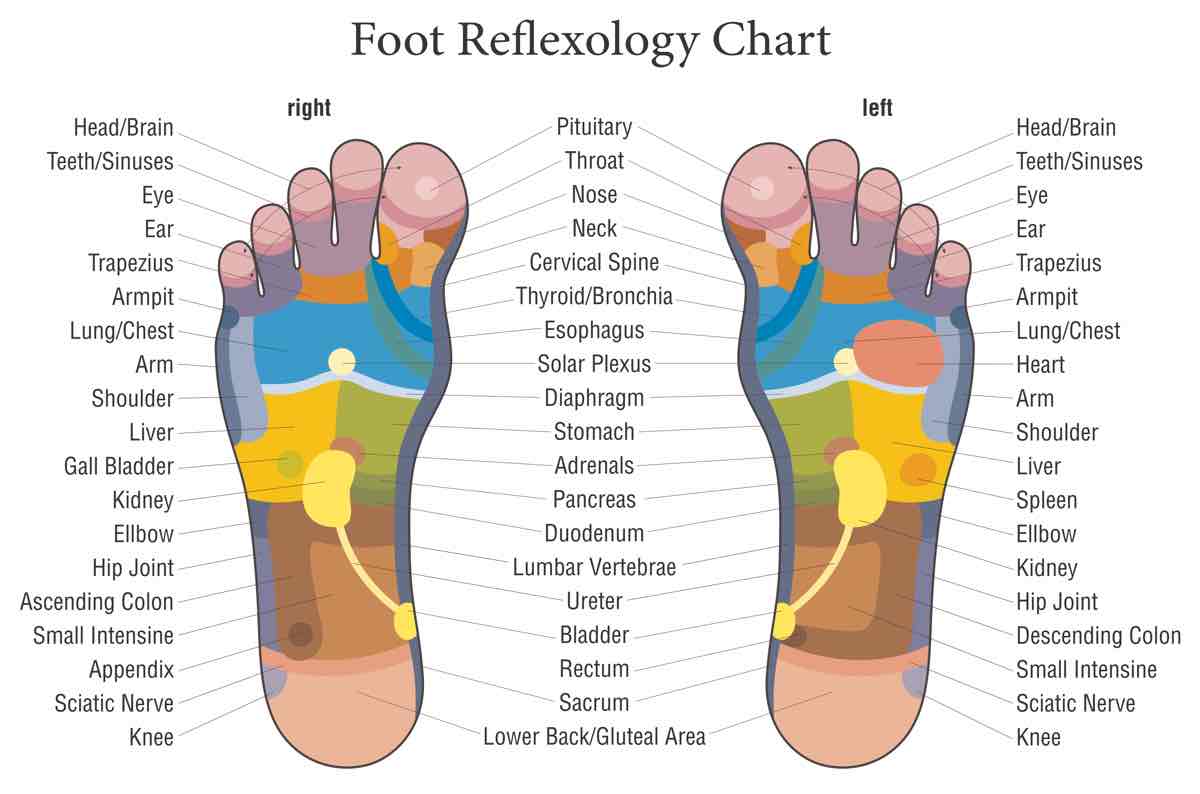
Reflexology

Origins of Reflexology
Reflexology is a simple, effective and natural therapy which focuses on the feet. It is over 5,000 years old and has origins in China and Egypt, where pressure therapies were recognised to have therapeutic benefits and more importantly, help prevent disease. The oldest evidence of Reflexology is a wall painting in the tomb of an Egyptian physician 'Ankmahor' at Saqqara, dated around 2500-2300 BC. The inscription reads "Do not let it be painful" (one of the patients) "I do as you please" (an attendant).
The wonderful art of Reflexology was not introduced to the Western World until the twentieth century when the Americans began to develop zone therapy, which had been practiced by the Europeans as far back as the fourteenth century, into Reflexology as we know it today.
What is Reflexology?
Every part of the body has a reflex point on the feet. The right foot represents the right side of the body and the left foot, the left side. The feet have many nerve endings and it is felt that this is why reflexology works. The nerves are stimulated at the reflex points with specific thumb and finger techniques. The nerve relays this stimulus through the nervous system up the spinal column to the corresponding affected area of the body.
Where there is inhibited functioning or disease, congestion will be found in the form of grainy crystal deposits. These deposits are caused by excess acidity in the bloodstream which increases calcium deposits at the nerve endings. They may feel tender, sensitive or positively painful and/or they may feel hard, tight or lumpy.
The feet are a prime target for these deposits because of the abundance of nerve endings present here; the fact that the feet are usually restricted in shoes preventing the natural movement of the foot and the normal nerve and blood supply to the feet; and the feet are at the end point of circulation so blood has to be circulated back up against the force of gravity. Toxins will tend to stagnate in the feet. These grainy crystal deposits can be broken down by Reflexology and the residue removed by the blood circulation and the lymphatic system. Once this has been achieved, the corresponding body parts will be stimulated and the body will be in a much better position to be able to heal itself.
As a holistic therapy, Reflexology aims to treat the body as a whole and endeavours to get to the root cause of disease and treat this, not the symptom. However, most disease/ailments have taken time to manifest and will therefore take time to eradicate.
One of the most important benefits of Reflexology is its efficiency in reducing stress. Approximately 70% of disorders can be related to stress and nerve tension.
Reflexology helps to alleviate the effects of stress by inducing deep relaxation, thereby allowing the nervous system to function normally and the body to seek its own homeostasis.
Reflexology also helps with pain. The body produces its own painkillers known as endorphins, which are five to ten times more powerful than morphine.
Reflexology has proved itself to be effective, but because no two people are the same, what may be of great benefit for one person, may not have the same results for another. Because a Reflexology treatment reaches the receiver on several levels - physical, mental and spiritual, it can only be of benefit.
Reflexologists do not isolate a disease and treat it symptomatically, nor do they work specifically on a problem organ or system, but on the whole person with the object of inducing a state of balance and harmony. Treating the whole body allows not only the symptoms of a problem to be treated, but also the cause.
Joan Fleming
Reflexology and Reiki Practitioner, Liverpool
Tel: 07722 276592

Joan Fleming
Based in South Liverpool, I am a highly skilled and qualified Reflexologist and Reiki Practitioner.
I am a Member of the Association of Reflexologists
I have studied in India at The Aithein school of Massage in Goa and have a qualification that is recognised by the Indian government.
www.aor.org.uk


